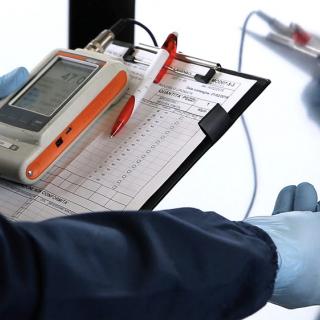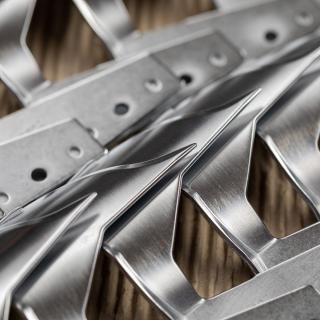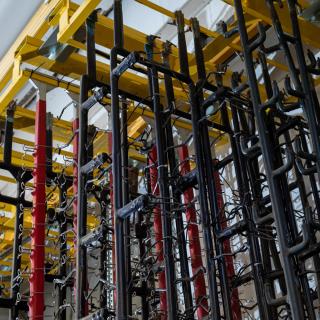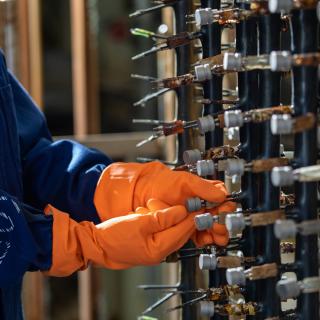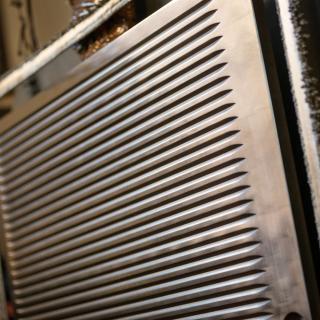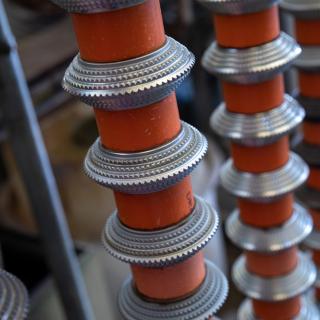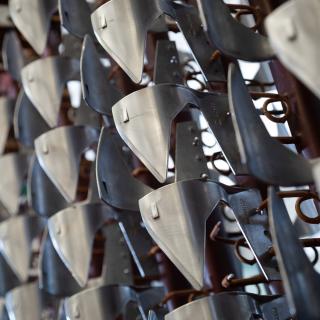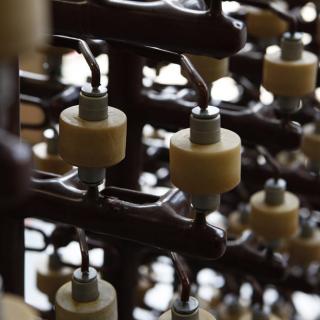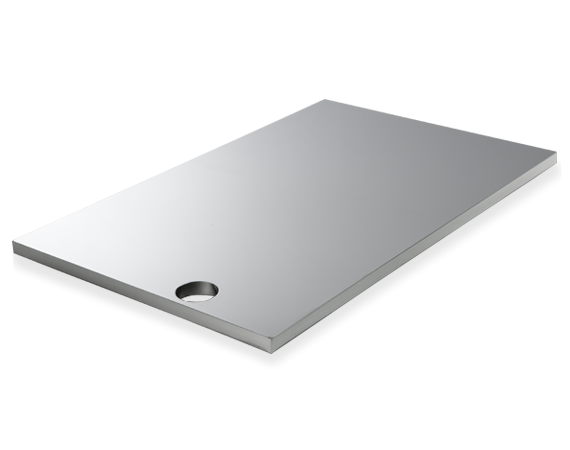
Hard chrome has a crystalline structure which, in comparison with other surface treatments, gives the deposit unique properties that are indispensable for various industrial applications. The main qualities are high resistance to wear, whether dry or with lubricant, by compression or abrasive action, and high resistance to chemicals.
Thick chrome plating, or hard chrome plating, is a surface treatment that deposits a chrome coating with a thickness of 0.005 to 1 mm on articles made of aluminium alloys and standard metal alloys (iron, stainless steel, copper, brass).
| Deposit type | Technical |
| Hardness (HV) | 850-1100 |
| Magnetic properties | Non-magnetic |
| SpessObtainable thicknesses (mm) | 0,005-1 mm |
| Toxicity | NO |
| Treatable materials | Al; Cu; Fe; Inox |
Deposit type: Technical
Hardness HV: 850-1100
Magnetic properties: Non-magnetic
Obtainable thicknesses (mm): 0.005-1 mm
Toxicity: NO
Treatable materials: Al; Cu; Fe; Inox
In this section you can download the PDF for the specific process.
Hard chromium plating, also known as thick chromium plating or functional-technical chromium plating, is a galvanic process aimed at electrochemically depositing a surface coating of chromium metal on the part.
The electrodeposition process, which is carried out by introducing part or all of the item to be coated into special equipment (in most cases, a chromosulphuric electrolyte), produces surface coatings of considerable hardness, resistant to wear and corrosion, with thicknesses ranging from a few tens of microns to 1000 microns.
The main feature of the electrolytic chromium deposit is its high resistance to wear, whether dry, under lubrication, compression or abrasives.
Hard chrome plating is applied directly to substrates consisting of:
Yes, thick chromium plating is applied using a highly electrolytic process and therefore has difficulty when faced with complex geometries, especially if high coating thicknesses are required. Deposition on undercuts and inside holes and threads is very difficult. On the other hand, on the perimeter surfaces of parts, a “tip effect” occurs, which can be reduced by means of specific masking.
Although not well-known in the collective imagination, thick chromium plating is one of the processes which (if handled correctly) has a much lower environmental impact than most galvanic processes. No water containing chromium is sent to the purification plant, as 100% of the water consumed in the backwashing lines is then reused in the same chromium plating process, recovering water and raw material. All equipment is vacuumed and the airflow is treated with a scrubber, then the air is “washed” in counterflow by water, which is also used 100% to replenish the levels in the process tanks.
In addition to high hardness and excellent wear resistance, the deposit provides considerable resistance to scoring and, in particular, to corrosion.
This characteristic, due to the formation of a passivated layer on the deposited surface, similar to that which develops for stainless steels, is proportional to the thickness of the deposit, its adherence to the substrate and its porosity.
Thanks to these characteristics (after specific tests on each family), thick chrome plating is also suitable for use in the food and beverage sector, such as for fry tops on cooking plates.
Chromium-plating takes place due to the passage of large amounts of current (density), so the objects to be chromium-plated must be supported with suitable electrical contact points achieved with support provided by frames (static).
